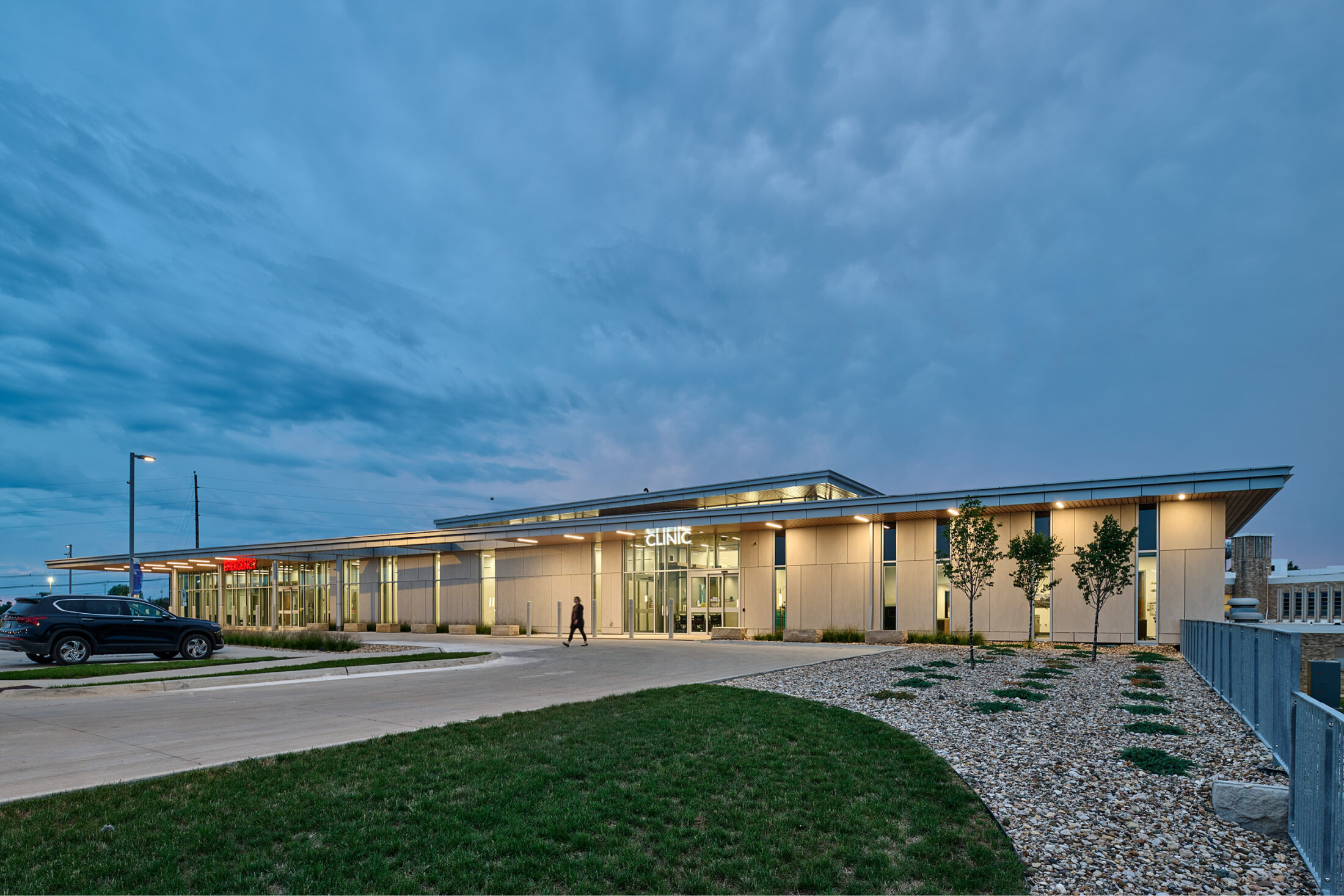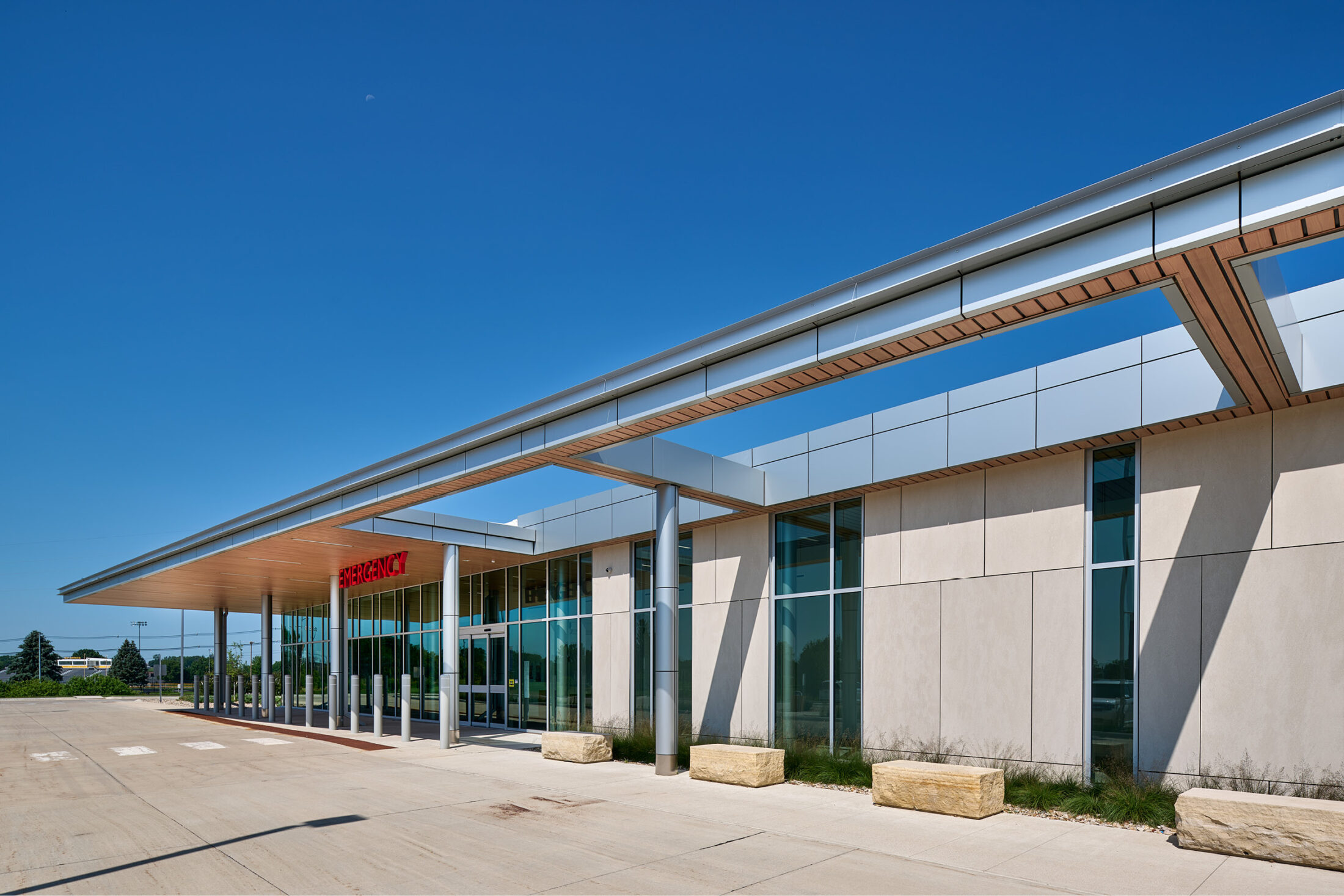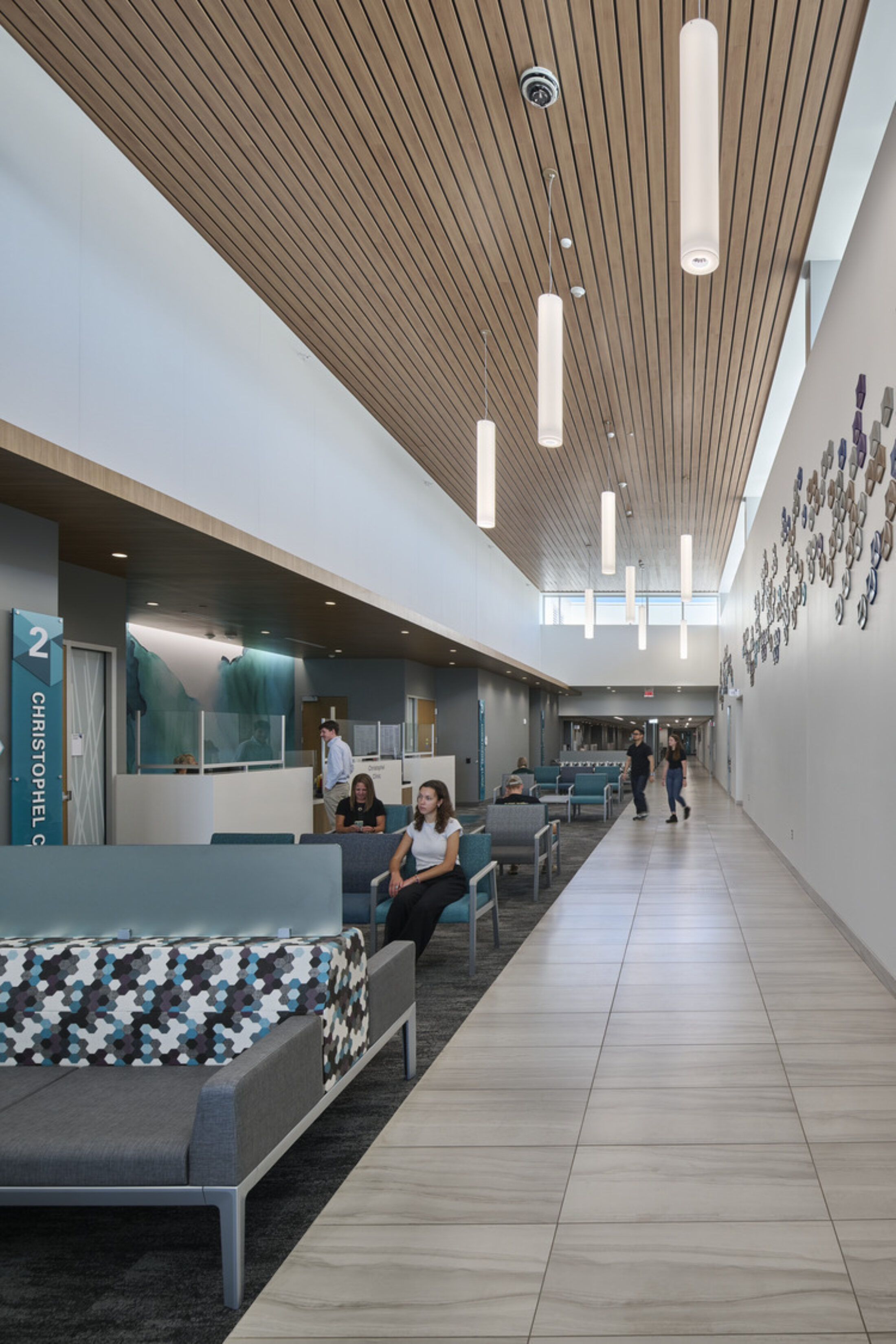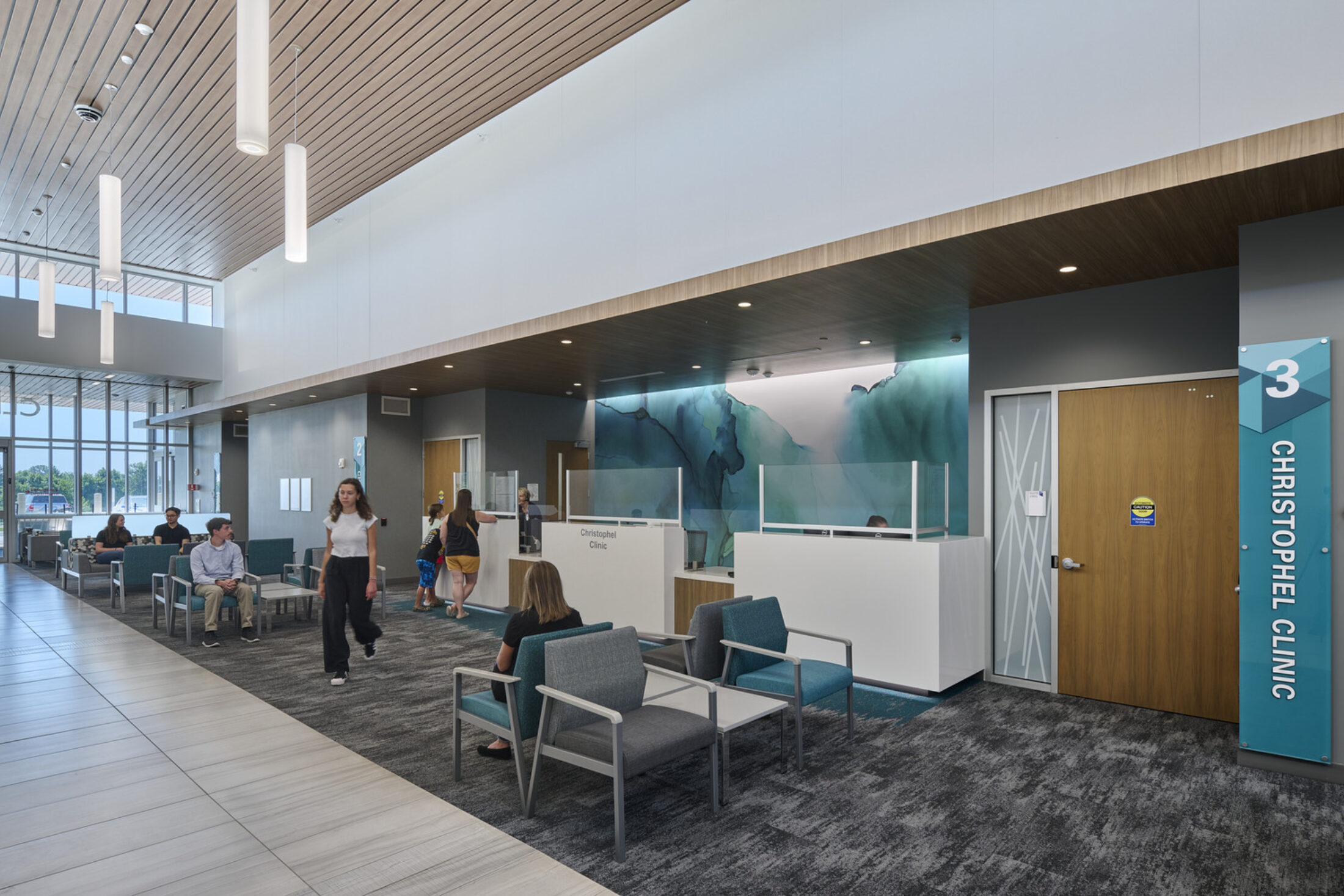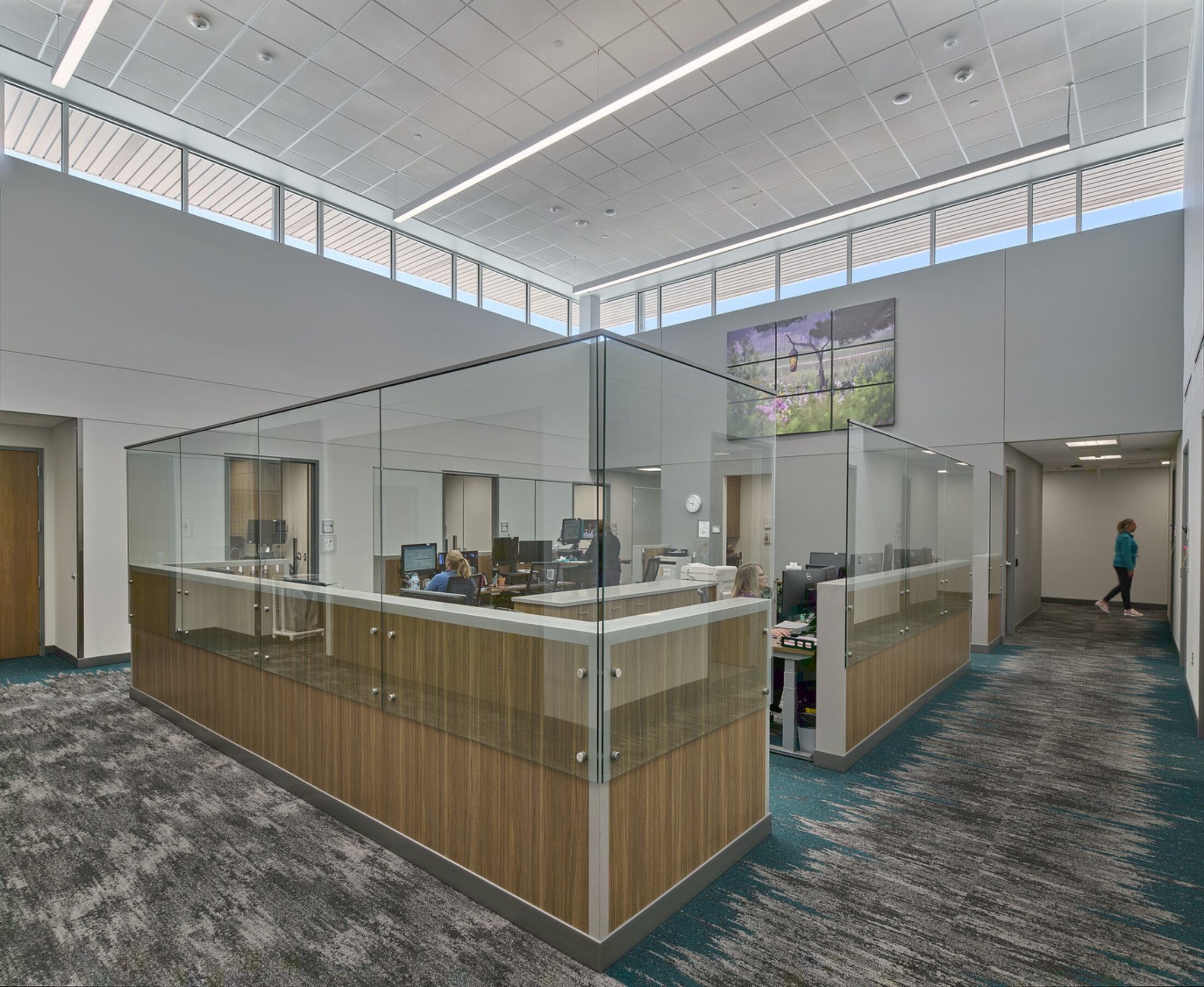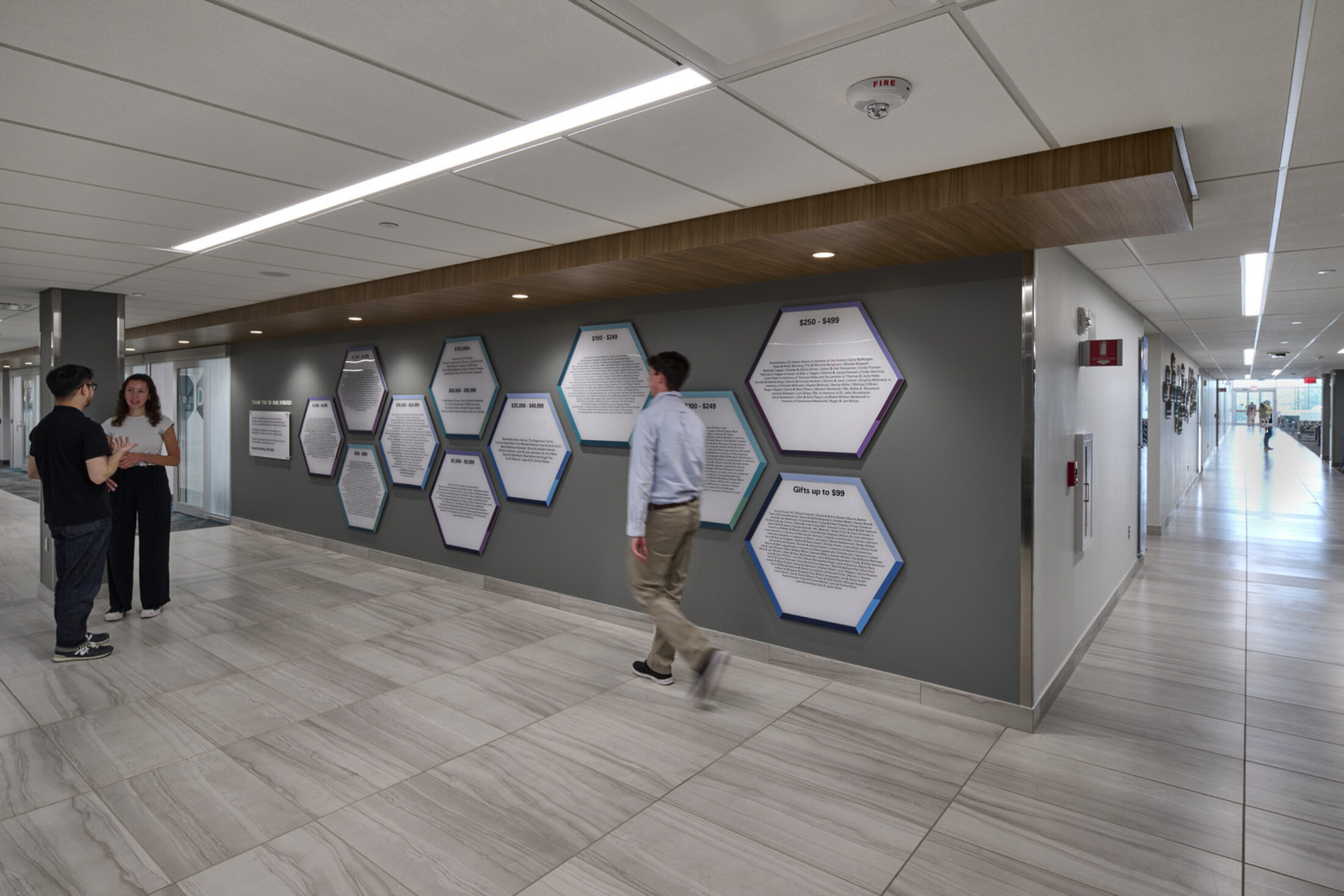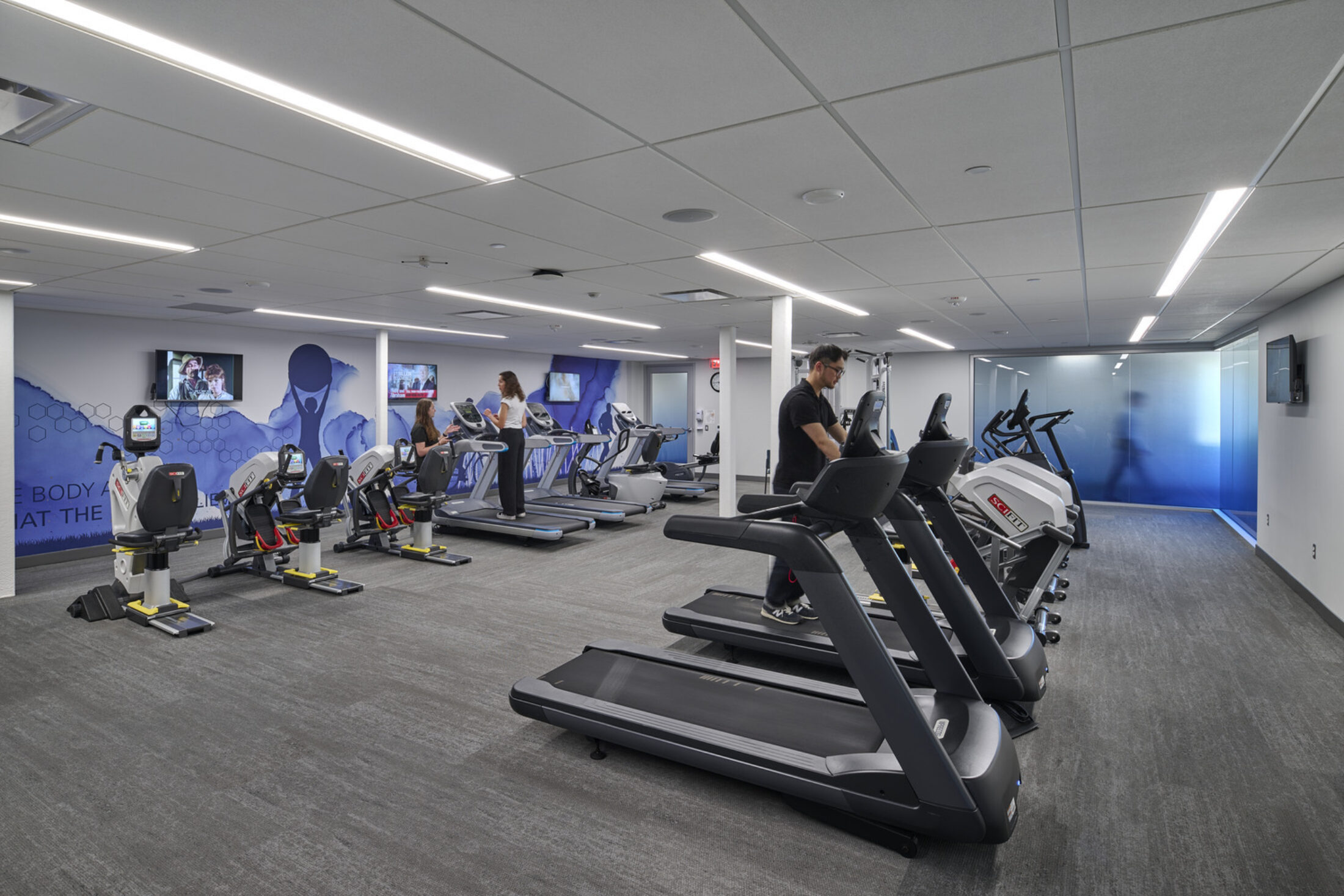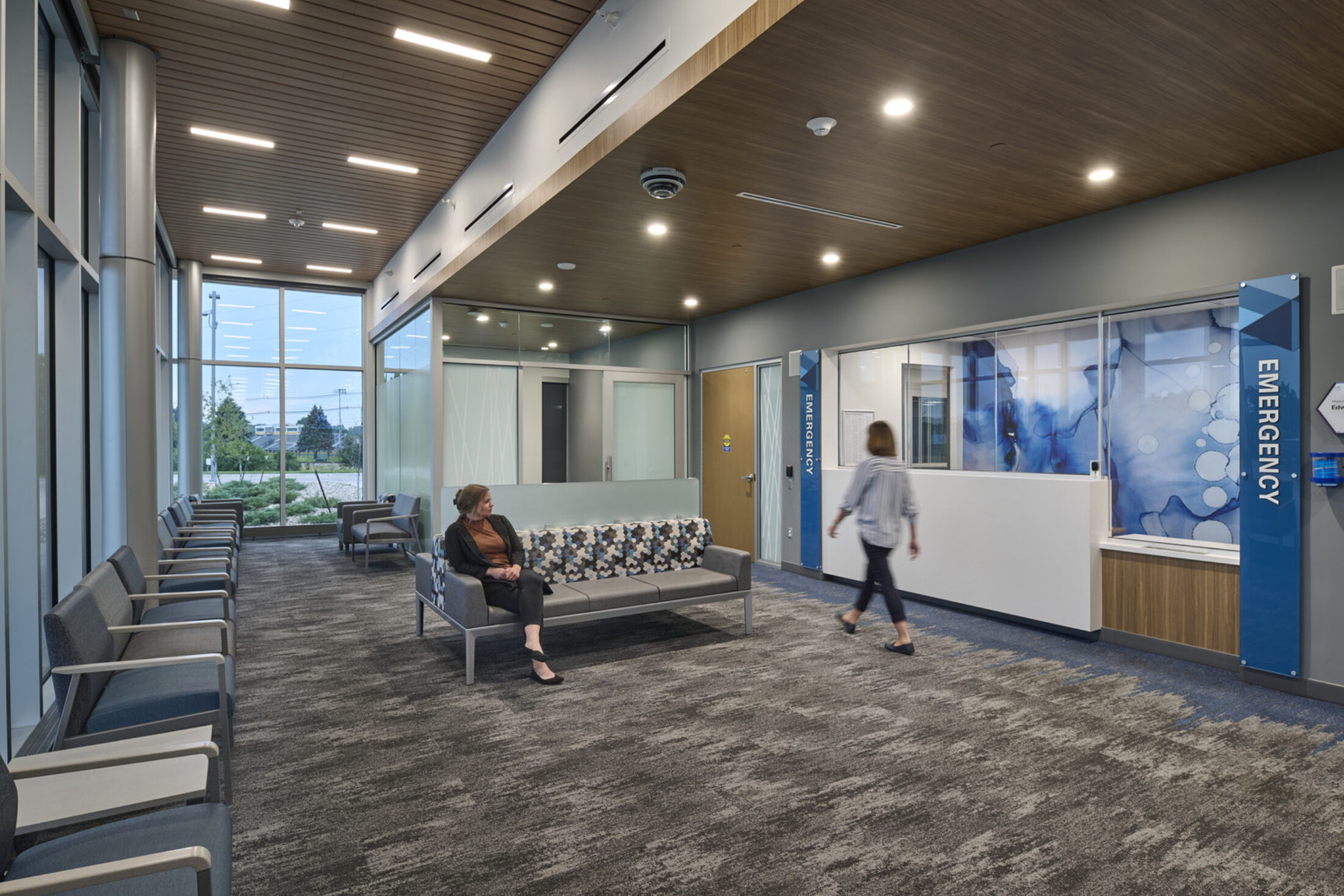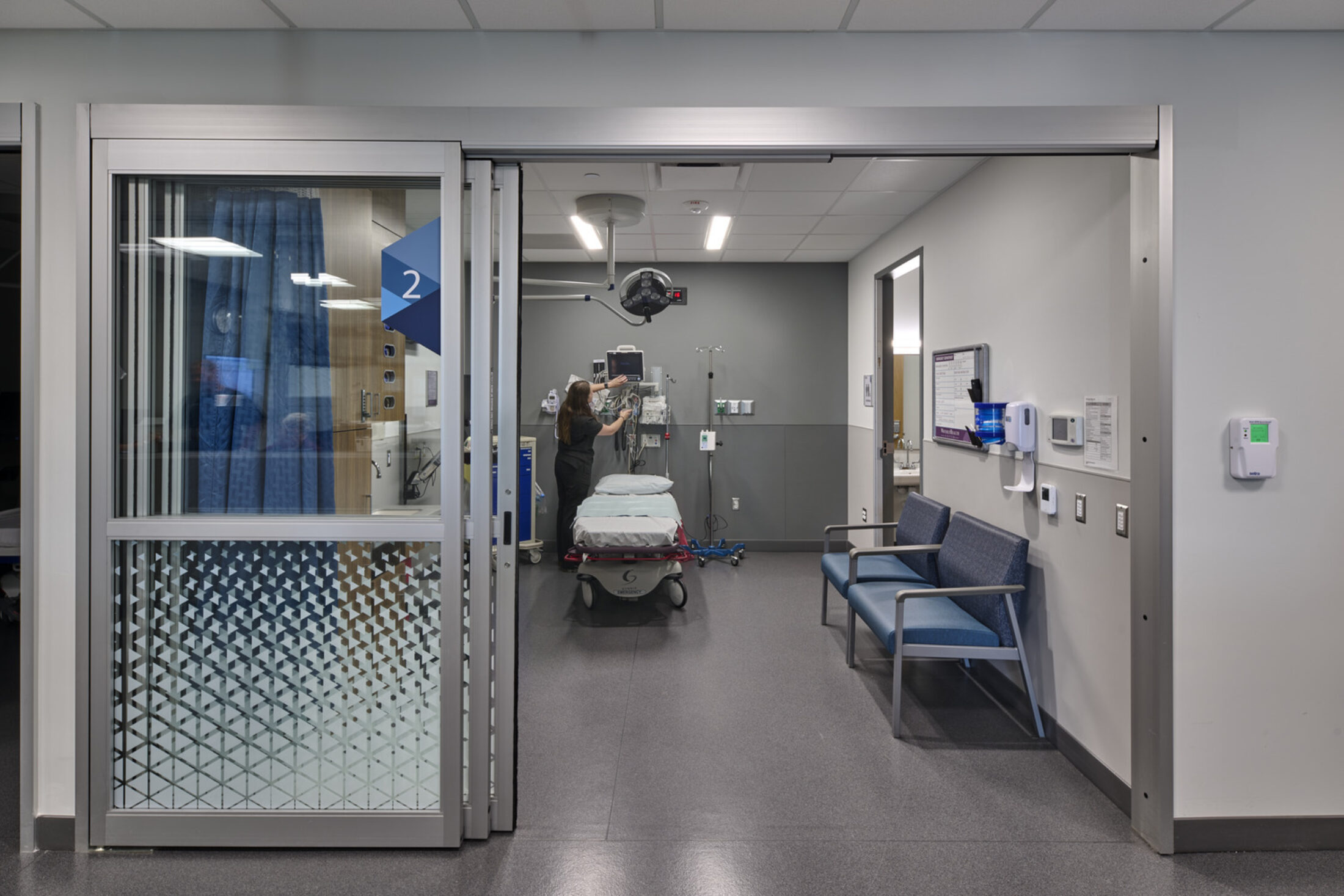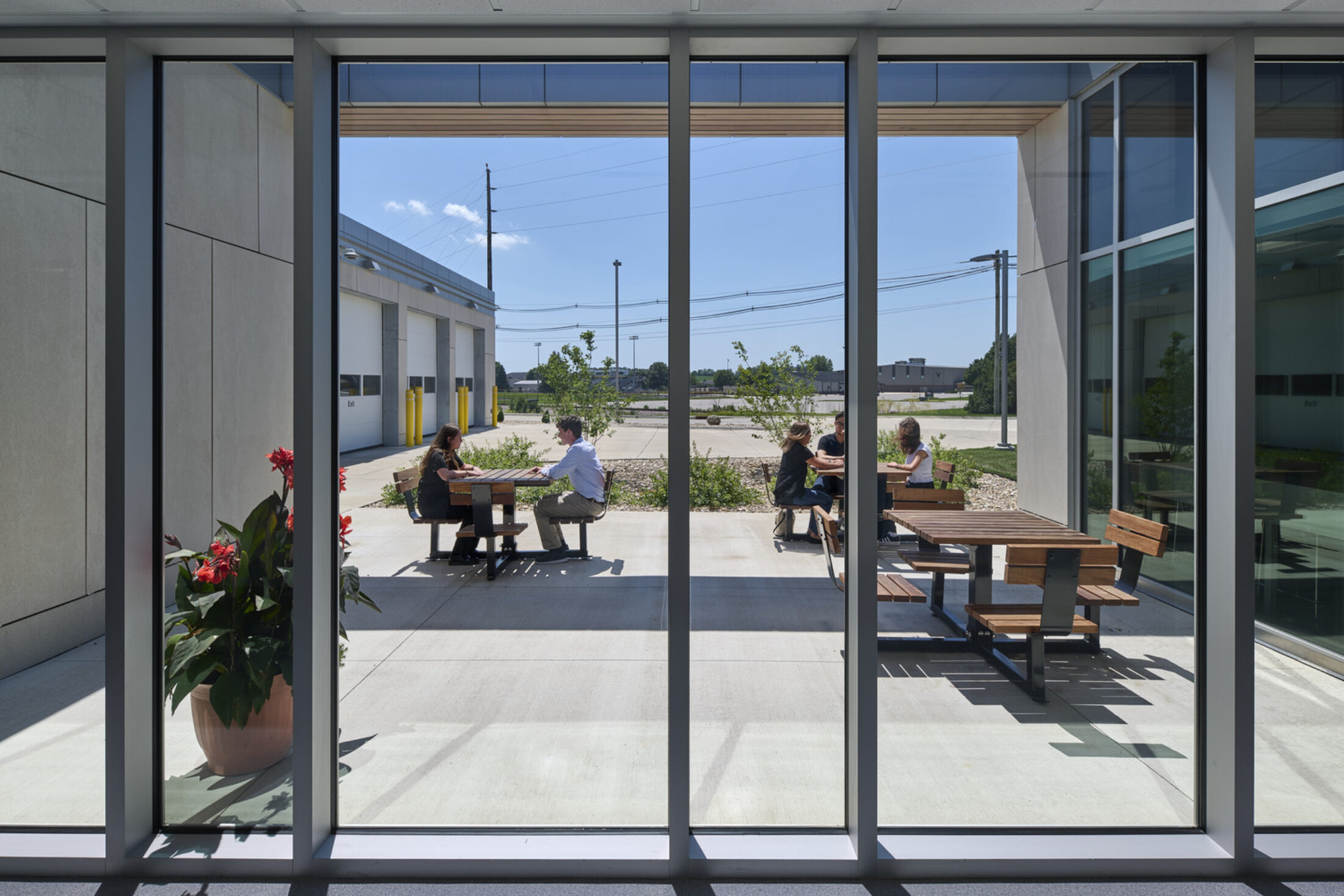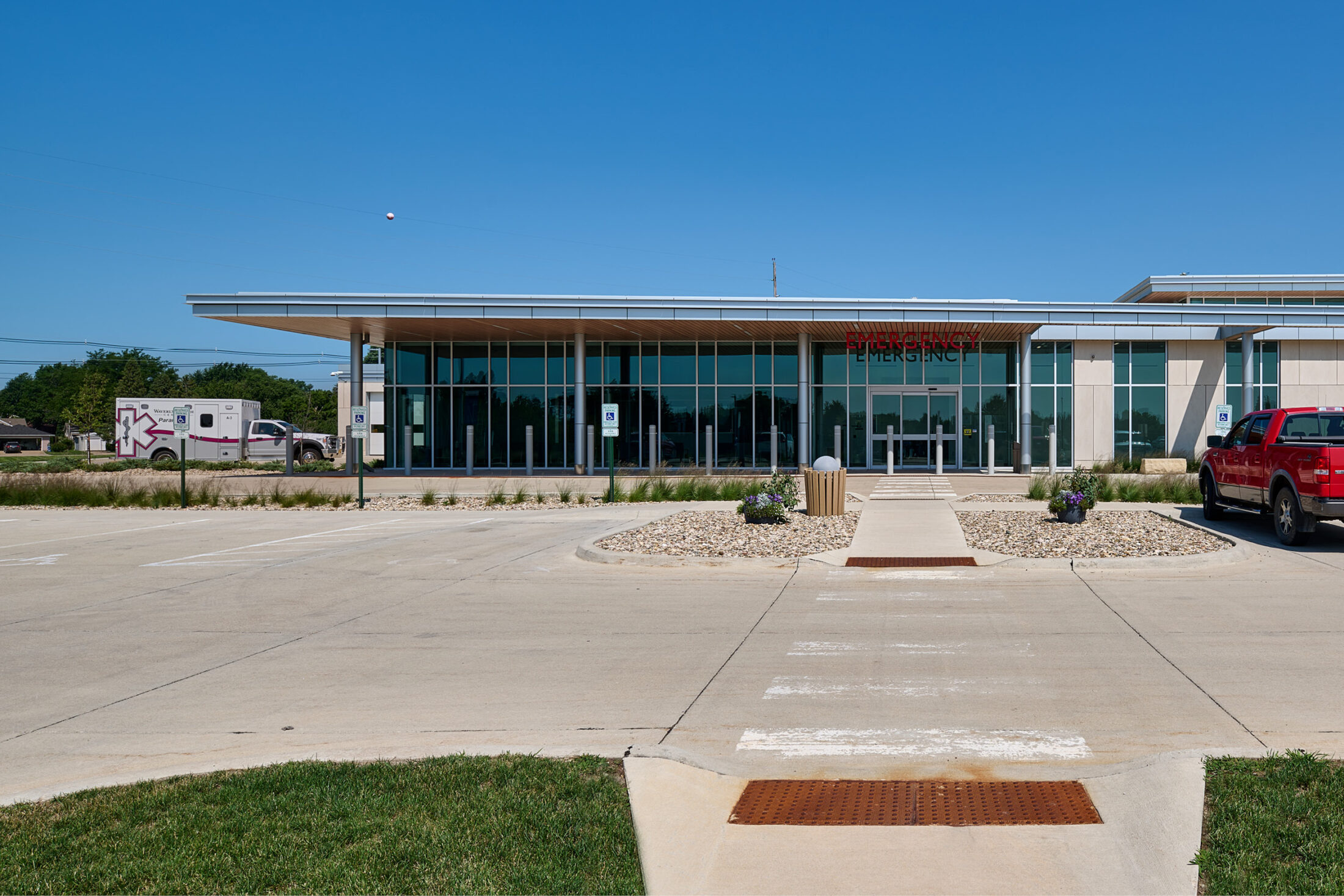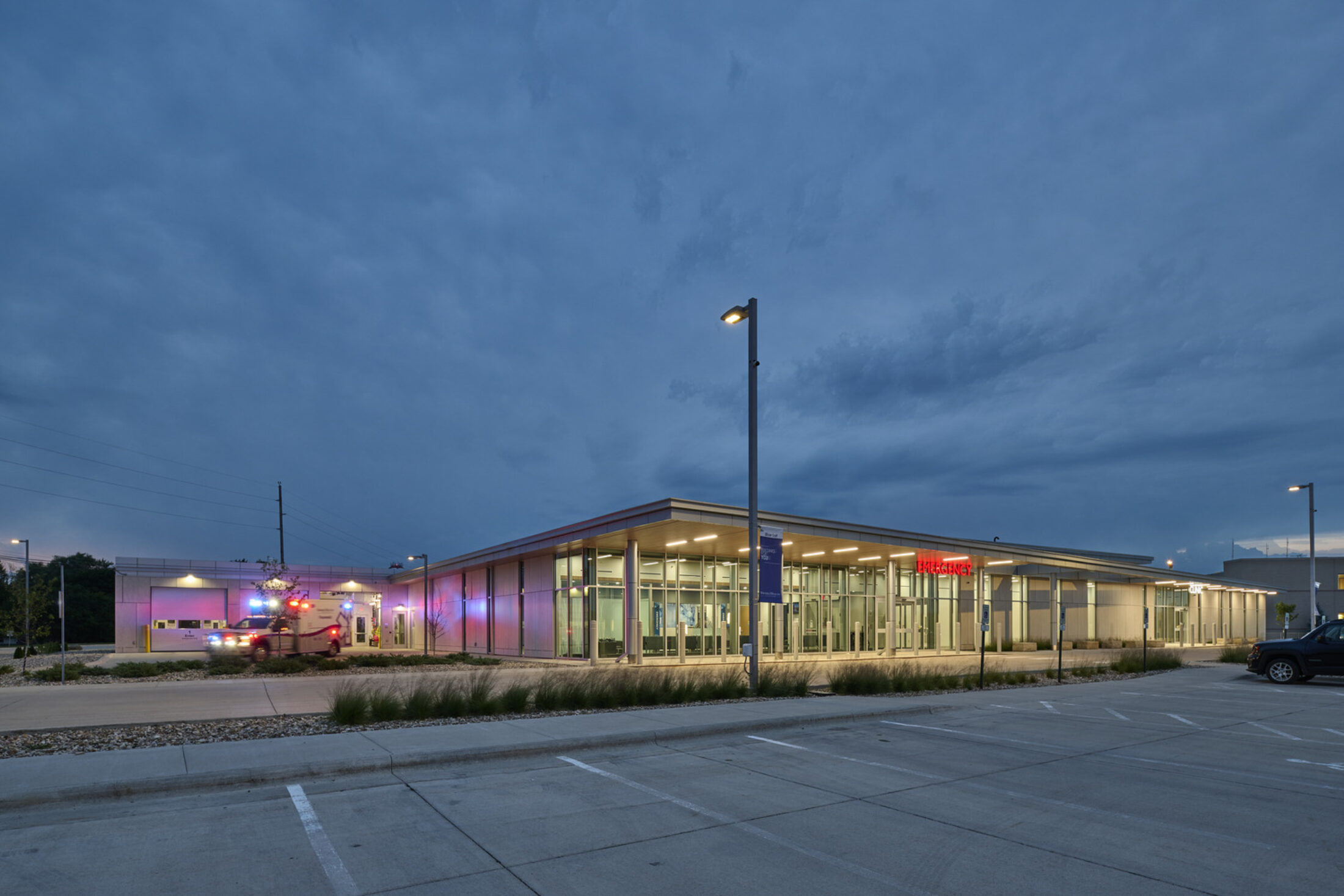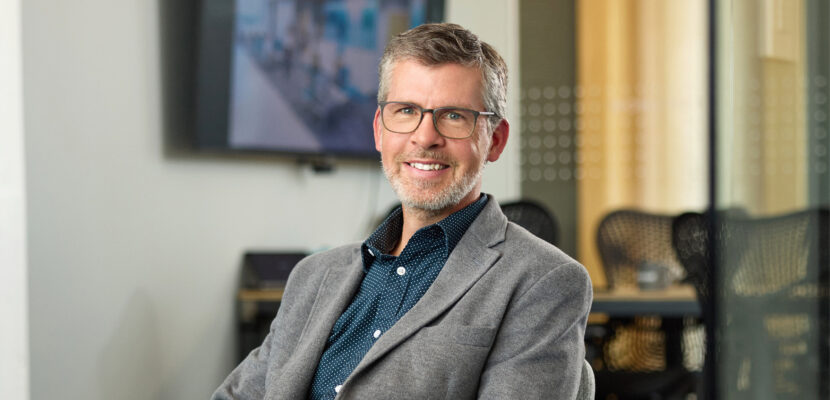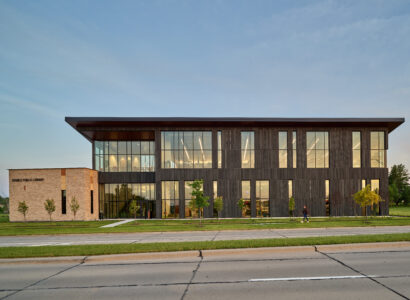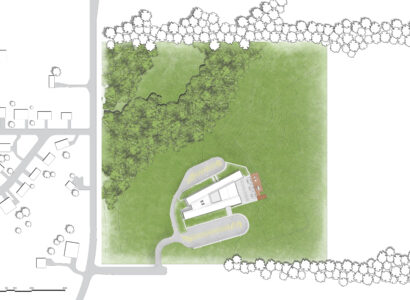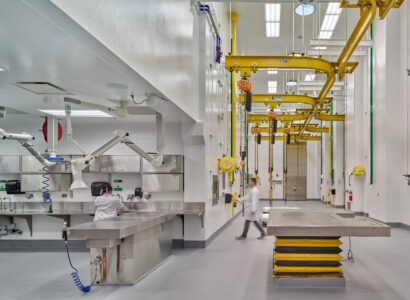Waverly Health Center (WHC) wanted to expand and renovate their Emergency Department (ED) and Clinic spaces. WHC worked with INVISION to improve patient visualization, workflows, and safety within their ED, as well as enhancing clinic areas and improving patient wayfinding. The 30,000sf addition included a new ED/ambulance garage and clinic space, plus 40,000sf renovation scope adjacent to the addition and spread throughout the building.
The new main concourse is highlighted by clerestory windows that bring light into the public area. INVISION created a strong, identifying element with the angled exterior canopy running the length of the new addition. The canopy ceiling features a warm, wood-look material that extends into the building, connecting the interior and exterior spaces.
The design team used materials and colors to make wayfinding intuitive in the main concourse, tying the element together while giving individual identities to the registration bays and each outpatient clinic. To meet the increasing need for outpatient services, a large part of the project area was dedicated to the expansion of these clinics. The new ED layout created optimal sightlines to patient rooms from the nursing teamwork area and a controlled access vestibule increased security and safety.
